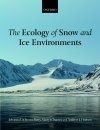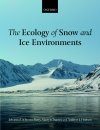By: Johanna Laybourn-Parry, Martyn Tranter and Andrew J Hodson
179 pages, 16 colour plates, b/w photos, b/w illustrations, tables
![The Ecology of Snow and Ice Environments The Ecology of Snow and Ice Environments]()
Click to have a closer look
About this book
Contents
Customer reviews
Biography
Related titles
About this book
Snow and ice environments support significant biological activity, yet the biological importance of some of these habitats, such as glaciers, has only recently gained appreciation. Collectively, these ecosystems form a significant part of the cryosphere, most of which is situated at high latitudes. These ice environments are important sentinels of climate change since the polar regions are presently undergoing the highest rates of climate warming, resulting in very marked changes in the extent of ice caps, glaciers, and the sea ice. Glacial systems are also regarded as an analogue for astrobiology, particularly for Mars and the moons of Jupiter (e.g. Europa), and one of the justifications for research in this area is its potential value in astrobiology.
This timely and accessible volume draws together the current knowledge on life in snow and ice environments. It describes these often complex and often productive ecosystems, their physical and chemical conditions, and the nature and activity of the organisms that have colonised them. The cryosphere is the domain of extremophiles, organisms able to adapt to the physiological and biochemical challenges of harsh cold conditions where liquid water may only be present for relatively short periods each year. The majority of extremophiles in ice and snow are microorganisms.
"The Ecology of Snow and Ice Environments" is intended for the non-specialist, enabling environmental scientists to understand the biological functioning of extreme cold environments and for biologists to gain knowledge of the nature of the cryosphere.
Contents
Preface
1: An introduction to ice environments and their biology
2: Snow
3: Ice surface environments
4: Sea and lake ice
5: Sub-glacial environments
6: Astrobiology
7: Future directions
Glossary
References
Index
Customer Reviews
Biography
Professor Laybourn-Parry is a Visiting Professor in the Bristol Glaciology Centre at Bristol University. Her research career spans 38 years, the last 22 years being spent researching polar ecosystems with the Australian and US Antarctic programmes in Antarctica and in Spitzbergen in the Arctic. She has produced four books and over 150 articles and reviews. Prior to her retirement in 2009 she was Pro Vice-Chancellor for Research at the University of Tasmania in Australia.
Professor Martyn Tranter is a Professor in the Bristol Glaciology Centre, specialising in biogeochemical processes in the cryosphere. He has worked in the Alps, Norway, Svalbard, Greenland and Antarctica, the latter via the kind auspices of the McMurdo Dry Valley Long Term Ecological Research program. He has edited four books and authored over 140 articles.
Professor Andy Hodson is a Professor in Cold Regions Biogeochemistry in the Geography Department at Sheffield University. He has been working continuously in Arctic Svalbard since 1991 and he now holds an adjunct position at the University on Svalbard (UNIS). His research has documented hydrological and biogeochemical process dynamics during the melt season in both polar regions, including maritime glacial environments of the Antarctic Peninsula and Svalbard, and continental ice sheets in Greenland and Antarctica.
By: Johanna Laybourn-Parry, Martyn Tranter and Andrew J Hodson
179 pages, 16 colour plates, b/w photos, b/w illustrations, tables

















![Conservation of Threatened Desert Plants [in India]](http://mediacdn.nhbs.com/jackets/jackets_resizer_medium/22/222545.jpg?height=150&width=96)

















